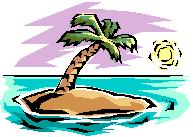



By choosing the right kind of aquarium, equipment, plants, decorations and optional accessories we lay the basis for the healthy conditions in our fish tanks. It is up to us the hobbyist to set up the closed environment in such a way that our fish can thrive.
This section will cover all the basics of setting up your
aquarium in order to reach your goal. The pages are all linked to form an easy progression from area to area or you can skip right to where you want to go by using the navigation map below


There are many types of fish tanks available today. They
come in all shapes and sizes ranging from the standard
rectangle to round with every geometric shape in between.
The most common type construction is the all glass type,
whose joints are sealed with clear silicon rubber, there
are also available the new Euro style tanks where the clear
silicon is replaced with black. Acrylic tanks are also
becoming more commonplace.
The basic time tested rule still stands, the bigger the
better, with the surface area more important than capacity.
Larger tanks are easier to care of. The toxic substances
released by the Biological or Nitrogen
cycle are more dispersed in the larger volume of
water, which allows the water quality stay higher for
longer periods of time.
Beginner hobbyist with their lack of experience will
benefit from the larger tanks.
For the beginner I would recommend the standard and
inexpensive rectangular 55 gallon all glass aquarium with
the approximate measurements of 48 inches long by 12
inches wide and 20 inches tall. A tank this size is easy to
care for and yet not too large to be overwhelming. A common
misconception of small fish equals small tank is not always
true as the smaller fish tend to be more active and need
more space to swim in.
Every aquarium should have a cover or top. A cover reduces
evaporation, provides a solid surface to place the lights
and prevents the fish from jumping out. It also protects
the tanks' lighting from water splashing on them.
The most common tank cover is made up of glass with a hinge
in the center and a plastic filler strip which can be cut
to fit
the filter and other accessories. They are usually called a
"Glass Canopy".
Another very common top is the "Full Hood" which is a
totally plastic top matching the trim of the tank. I prefer
the glass canopy because it offers you more choice in the
lighting and the clear plastic of the full hood becomes
foggy and warps with time.
Various electrical devices such as filters, heaters, lights and powerheads are necessary to create the right conditions for our fish and plants. Everyone knows that water and electricity don't mix. A few simple common sense pratices to get use to while working in or around your fish tank can save you money and maybe your life. I will list a few precautions here that might be taken for granted but you should be aware of.
|
|
. |
basics continued. |
||
|
|
